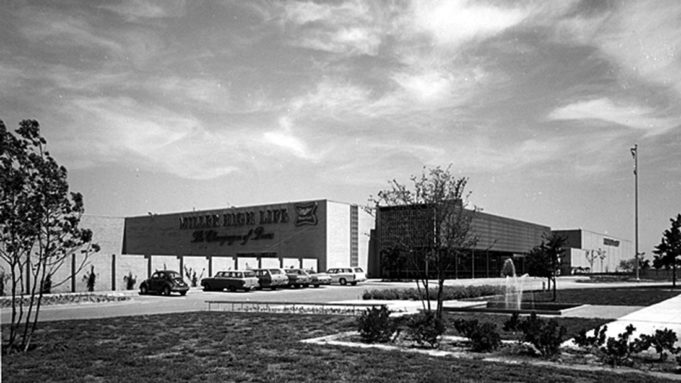The MillerCoors brewery on l-35 brews more than 9 million barrels of beer annually. Depending on which way the wind is blowing, you can smell the suds from nearly a mile away while you’re on the highway headed into or away from Fort Worth. Hell, if the cloud ceiling is low and the wind is blowing slowly, you can damned near catch a buzz from the fumes.
Nine million barrels is a lot of beer. The plant employs more than 545 people, and the trucks are lined up to load up nearly all hours of the day and night. The brewery, which opened in 1969 and produced about 300,000 annual barrels initially, is quite a beer success in North Texas.
But the history of beer in Texas, and particularly Fort Worth, is a lot more humble than those numbers suggest. The 1850 census listed 19 brewers in Texas, but none of them appeared elsewhere, suggesting they were homebrewers, according to Clay Coppedge, a Texas journalist who writes on the topic.
“Back then,” Coppedge said, “the only thing available were ales, which were brewed warm and didn’t spoil in the Texas heat. The early brewers who wanted to make lagers, which are brewed cold, had to brew their beer in the winter and then store it in deep cellars or caves.”
Notable among them was the deep cellar cooled by a nearby water source built by William Menger for his brewery in San Antonio in 1855, above which he built the Menger Hotel four years later.
According to beer historian Brian Brown, things had changed in South Texas by the 1860s. “As the frontier opened up and people moved west, their thirst followed them,” Brown said. “You look at the port of Galveston at that time, and you see old newspaper ads for early Guinness, Bass, porters, ales, and lagers — along with whiskeys, of course. At the same time, up in Dallas there was a place that was advertising ales and porters. But there wasn’t much in Fort Worth [which was still quite small at that time] until the 1870s, other than Germans who homebrewed their lagers.”
The earliest brewery in Fort Worth was built by Nathaniel Terry, who had his slaves build it during the Civil War, Brown said, “but there is no evidence of him ever going into production, and he died right after the war.”
In 1870, Simon Meyer arrived in Fort Worth and supposedly brewed beer here, Brown said, but he moved to Dallas within a year or two and opened up Meyer’s Garden there, which included a saloon, fountains, and the first zoo in Dallas, about a decade later.
The key to brewing cold lagers was ice, and the first ice plant didn’t open in Fort Worth until 1879. Throughout the 1870s, ice was brought in from Dallas on stagecoach. During that period, two notable beers brought on those same wagons were William J. Lemp’s celebrated St. Louis Lager Beer and Anheuser’s Lager Beer, also from St. Louis.
“If you want to talk about industrial beer brewing in Fort Worth, you have to go all the way to 1891, when the Texas Brewing Company opened its doors,” Brown said. “It was the largest brewery in the state for a while, on the site where the Intermodal Transportation Center on Jones Street now sits.”
But unlike the two largest breweries in San Antiono, the Lone Star Brewery and Pearl Brewing Company, which both opened in the 1880s and produced and advertised their brand name beers (the “lite” versions of both Lone Star and Pearl are now produced at the MillerCoors brewery on l-35), the Texas Brewing Company brewed a number of different lagers under different names, none of which wound up being remembered. “We know they were brewing lagers,” Brown said, “because they had an ice factory at the brewery, but there is no real description of the beer they sold.”
Texas Brewing Company, along with several other breweries in the state, closed in 1918, with the advent of Prohibition.
And following that, few of them managed to reopen. Most of the beer consumed in Texas was made elsewhere, except for Lone Star — which reopened as a new company after new owners acquired the Lone Star Beer copyright — Pearl, which managed to stay open during Prohibition, and Shiner Beer. That changed in 1966 when Anheuser-Busch opened its doors in Houston and the Miller Brewing Company bought the Carling Brewing Company that same year — and began brewing their own beer three years later.
Then, of course, along came the craft brewers, many of which brew in Fort Worth. “They are local breweries making their products for local people,” Coppage said. “Same as it was in the early days. And that’s how it should be. Texans are still thirsty.”













Miller Brewing didn’t buy Carling in 1966. Miller needed a production facility outside Wisconsin, and bought Carling’s brewery that they built on 35W and never opened. Carling was eventually absorbed into MolsonCoors years later.
Actually it did open and did run some beer. It was a dismal and financial failure. They were trying a new brewing process known as continuous brewing process. Carling’s hadn’t tried this process on the scale of what they built in Fort Worth, but had tried it on a much smaller scale as a pilot project at their Cleveland brewery. The Carling Fort Worth brewery was in operation for about 5 months and did put some beer out the back. Millers did buy it in 1966 and spent about 3 years adding on to it and removing the continuous brewing equipment. They where also the the first brewery to brew the Miller Lite beer.